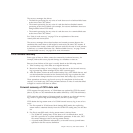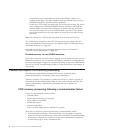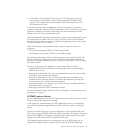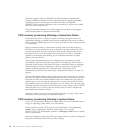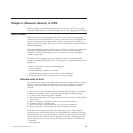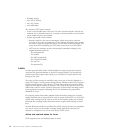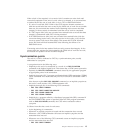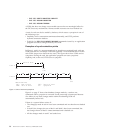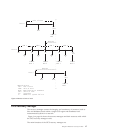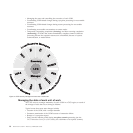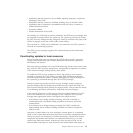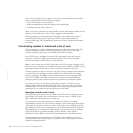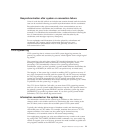v Working storage
v Any LU6.2 sessions
v Any LU6.1 links
v Any MRO links
The resources CICS retains include:
v Locks on recoverable data. If the unit of work is shunted indoubt, all locks are
retained. If it is shunted because of a commit- or backout-failure, only the locks
on the failed resources are retained.
v System log records, which include:
– Records written by the resource managers, which they need to perform
recovery in the event of transaction or CICS failures. Generally, these records
are used to support transaction backout, but the RDO resource manager also
writes records for rebuilding the CICS state in the event of a CICS failure.
– CICS recovery manager records, which include identifiers relating to the
original transaction such as:
- The transaction ID
- The task ID
- The CICS terminal ID
- The VTAM LUNAME
- The user ID
- The operator ID.
Locks
For files opened in RLS mode, VSAM maintains a single central lock structure
using the lock-assist mechanism of the MVS coupling facility. This central lock
structure provides sysplex-wide locking at a record level. Control interval (CI)
locking is not used.
The locks for files accessed in non-RLS mode, the scope of which is limited to a
single CICS region, are file-control managed locks. Initially, when CICS processes a
read-for-update request, CICS obtains a CI lock. File control then issues an ENQ
request to the enqueue domain to acquire a CICS lock on the specific record. This
enables file control to notify VSAM to release the CI lock before returning control
to the application program. Releasing the CI lock minimizes the potential for
deadlocks to occur.
For coupling facility data tables updated under the locking model, the coupling
facility data table server stores the lock with its record in the CFDT. As in the case
of RLS locks, storing the lock with its record in the coupling facility list structure
that holds the coupling facility data table ensures sysplex-wide locking at record
level.
For both RLS and non-RLS recoverable files, CICS releases all locks on completion
of a unit of work. For recoverable coupling facility data tables, the locks are
released on completion of a unit of work by the CFDT server.
Active and retained states for locks
CICS supports active and retained states for locks.
14 CICS TS for z/OS 4.1: Recovery and Restart Guide




